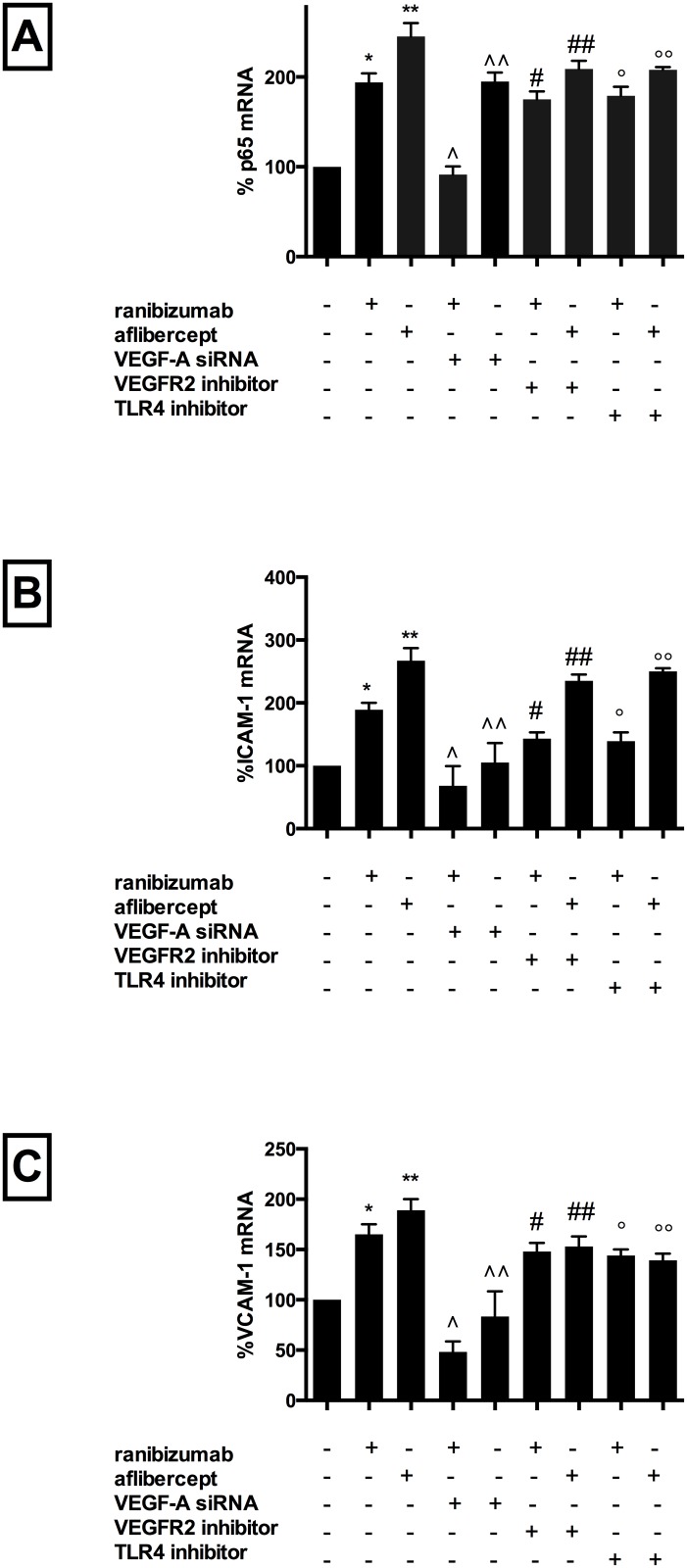Fig 3. Ranibizumab and aflibercept increased p65, ICAM-1 and VCAM-1 mRNA in HCAECs, with these effects attenuated by blocking VEGF-A gene synthesis, or VEGFR2/VEGF-A ligand binding or TLR4 receptor inhibition.
HCAECs were incubated with ranibizumab (0.1nM) or aflibercept (0.45nM), or PBS (control). For VEGF-A knockout studies, HCAECs were transfected with VEGF-A siRNA 72h prior to incubation. For VEGFR2 inhibitor and TLR4 inhibitor experiments, these agents were added simultaneously with the drug. Changes in p65, ICAM-1 and VCAM-1 (panels A, B and C) mRNA levels were quantified using real-time PCR. Results are expressed as means +/- SEM. *P < 0.05 ranibizumab treated cells vs. non-treated cells, **P< 0.05 aflibercept-treated cells vs. non-treated cells, ∧P<0.05 ranibizumab-treated non VEGF-A siRNA transfected cells vs. ranibizumab-treated VEGF-A siRNA transfected cells, ∧∧P<0.05 afliberept-treated non VEGF-A siRNA transfected cells vs. abflibercept-treated VEGF-A siRNA transfected cells, # P < 0.05 ranibizumab-treated cells vs. ranibizumab-treated VEGFR2 inhibitor treated cells; ##P< 0.05 aflibercept-treated cells vs. aflibercept treated VEGFR2 inhibitor treated cells, ° P < 0.05 ranibizumab treated cells vs. ranibizumab-treated TLR4 inhibitor treated cells; °°P< 0.05 aflibercept-treated cells vs. aflibercept treated TLR4 inhibitor treated cells.

